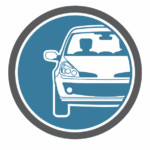If you’ve ever been in a car accident, even a fender bender, you know it can be a nerve-rattling experience. The aftermath of a crash can be chaotic and emotionally charged because everyone involved is scared and, in some cases, angry.
Regardless of the heightened emotions, it’s critical to document the accident damage if possible. Memories change over time, and a fresh snapshot of the scene and damages right after the accident can demonstrate what happened in real time.
This article will examine what types of documentation are best for insurance purposes and the subsequent autobody repair process.
Safety Comes First Always
Safety is your first consideration following an auto accident. If you can, move your vehicle to a safe location — on the side of the road or in a nearby parking lot. Suppose your vehicle is obstructing traffic, especially on a fast highway. In that case, it’s essential to move and get out of the way before it gets hit again or causes another accident, which sometimes happens. Call emergency services once you’ve gotten your vehicle to a safe spot. Be clear with the 911 operator about your location and the status of any other drivers or passengers involved in the accident. Do your best to disclose your location accurately. Then, if it’s safe to do so, ensure no one was injured in the accident before you start documenting.Get Initial Accident Information
Gather the needed information as calmly as possible before anyone leaves the scene. You can use a small notebook, but taking notes on your phone can make the process faster. Documents you’ll want to get include the other driver’s insurance information, the license plate number of any other cars involved, and the registrations. Record the date, time, location, and weather conditions along with everyone’s contact details. Don’t overlook potential witnesses. For example, if a pedestrian saw the accident, write down their first recollection, name, and contact information. This could be critical information you’ll rely on later for your insurance claims and any fault determined by the police.Take Comprehensive Photos and Videos
The modern age has made taking photos and even videos simple and enabled us to record almost anything at any time. Factor this. If you feel uncomfortable taking pictures and videos, someone else will likely, and if you don’t have your own set of media, you could be at a disadvantage with your insurer and in court, if it comes to that. Get wide shots of the scene, which means stepping back and taking shots of the entirety of the accident scene. Ask yourself how many cars are involved? Who was involved? Your goal here is to get a clear view of as much of the accident as possible, because this gives context. For example, where are the vehicles in proximity to one another? How many vehicles were involved? Did anyone leave the scene? Next, move in and take close-ups of the damage. Take several shots of the damage from different angles. Move in for even closer shots to show scratches, dents, broken lights, or leaking fluids. Finally, take shots of street signs, skid marks, debris, and anything else that gives context to the accident scene.Write a Clear Report
Focus on writing a clear report in plain language. This doesn’t need to be fancy, but it must be clear and accurate. Include the location of each damaged part of your vehicle. For example, use terms like “rear passenger-side door dented near handle”. This might seem tedious, but you’ll be glad you took the time and made the initial effort later in the process. If you can continue driving your vehicle, note and record any unusual noises or handling issues after the crash.The Police Report and Other Official Documents
Getting the police report is an essential step in the documentation. Insurers and the courts will rely on the official version of events, and you want ot make sure the responding officer has the facts straight and that you have a clean copy of the report. Keep any citations, towing receipts, and emergency services records. Every little detail matters when you build your case later in the process.Organize Your Documentation for Insurance
Create digital folders with pictures, videos, and documents to email your insurance underwriter. Adjusters don’t like to respond to phone calls from policyholders; they prefer to ‘just have the fact’ in an organized and usable fashion. This makes their job easier and faster, increasing the probability of your claim being accepted without problems. Save the file names so they make sense to anyone looking at them. Finally, back up your media and documents in cloud storage on an external hard drive for safety.Hospitalization and Medical Records
Unfortunately, you might have been injured in the accident and need medical care. If this is the case, call 911 on the spot and seek medical attention immediately. Consider hiring a personal injury lawyer if you’re injured — many offer free consultations. Because you’ll have downtime while you recover, you’ll want someone working for you to gather key details, like the traffic accident reports, information on the other vehicles involved, and the extent of your injuries and medical bills. A representative lawyer can assist you in payment of your medical bills, lost wages, and a personal injury claim if it comes to that. You’ll want to be sure you have accurate representation to receive fair compensation from any personal injury claims, so choose your lawyer carefully.Using Documentation for the Repair Process
Providing the autobody repair shop with all of your documentation, especially photos and videos, gives invaluable context to the technicians working on your vehicle. Repair techs are often grateful to have the photos for reference. Photo documentation guides repair estimates and is especially helpful in avoiding any missed damage that can cause further problems down the road.Reliable Autobody Repair Services in Denver
Not all autobody repair shops are created equal. Since your vehicle is one of your most significant investments, getting a local autobody shop you can rely on is essential. Denver Auto Body opened its doors in 1988, and since then, we’ve been repairing and restoring the vehicles of the people who live in and around Denver. Get a free initial quote for your vehicle’s damage with our easy online tool. Enter basic information, and we’ll give you an estimate of the costs to repair your damage. Or, call us at (303) 288-6263 directly with any questions regarding your repairs and how Denver Auto Body can get you back on the road as quickly as possible.Denver Auto Body is a premier collision repair center serving the Denver Metro area for over 35 years. As an I-CAR Gold Class and ASE Certified shop, we specialize in restoring vehicles to pre-accident condition using OEM parts. We prioritize safety, transparency, and expert insurance claim handling.


